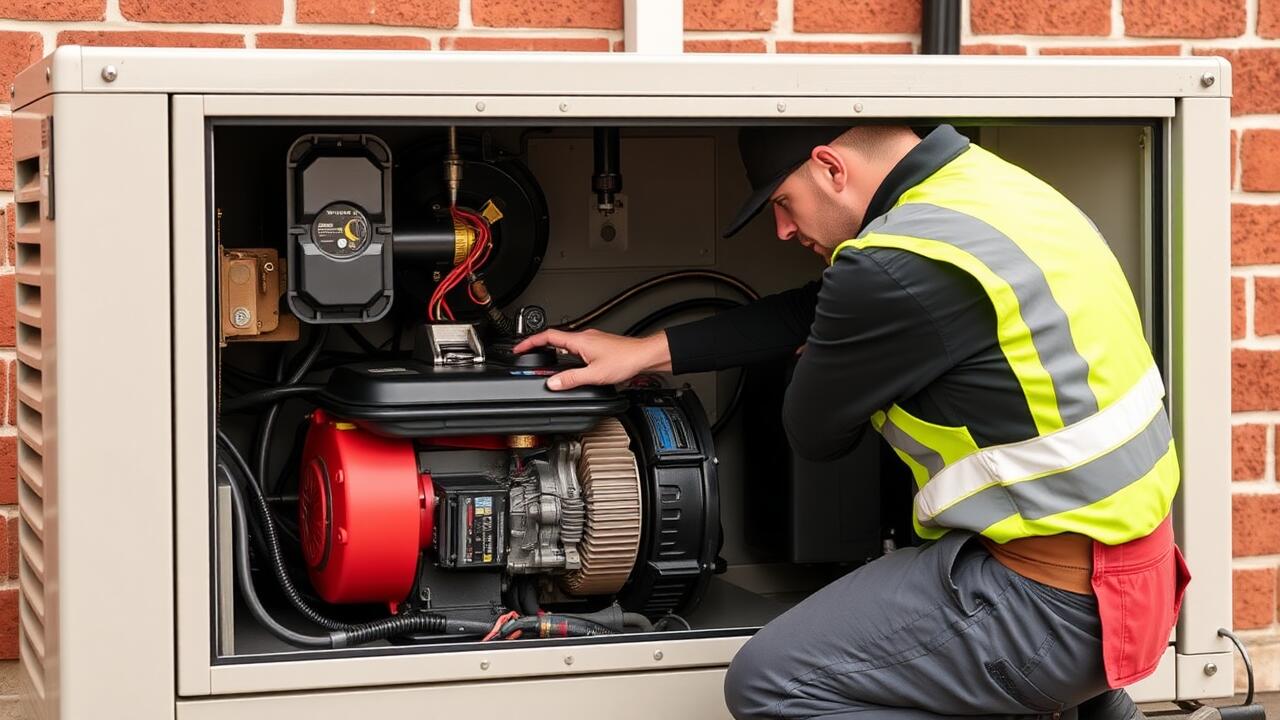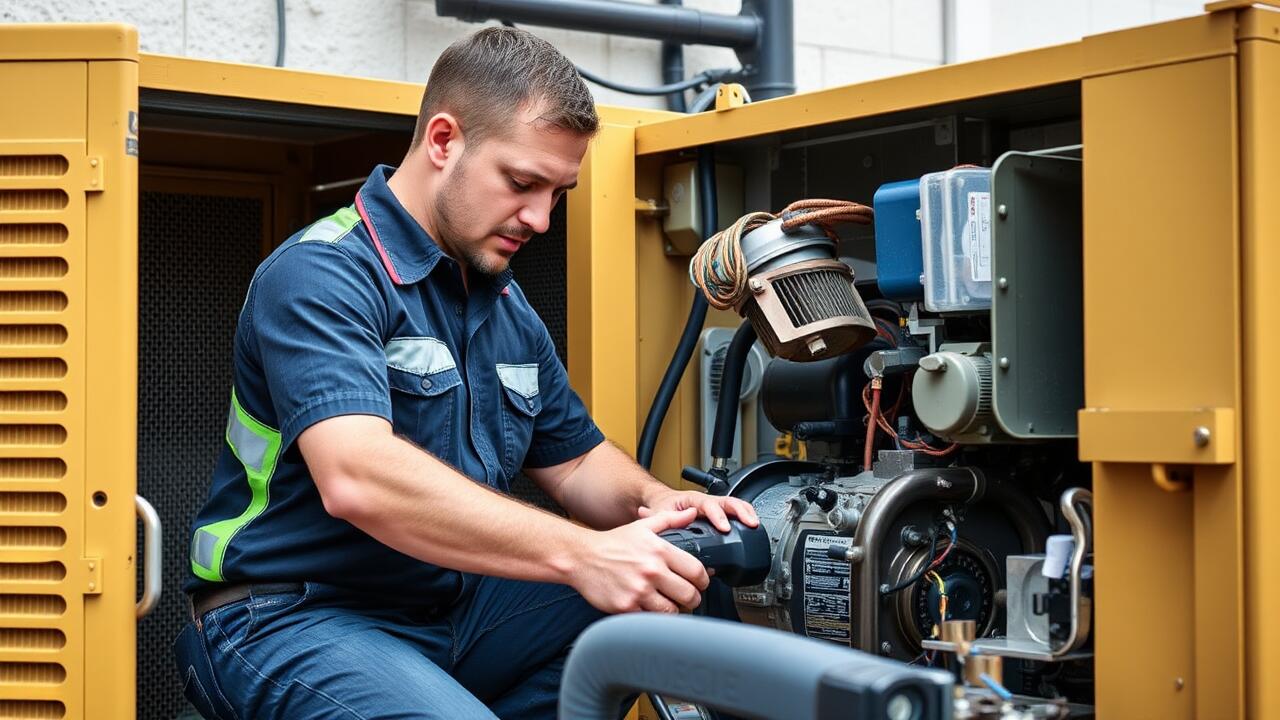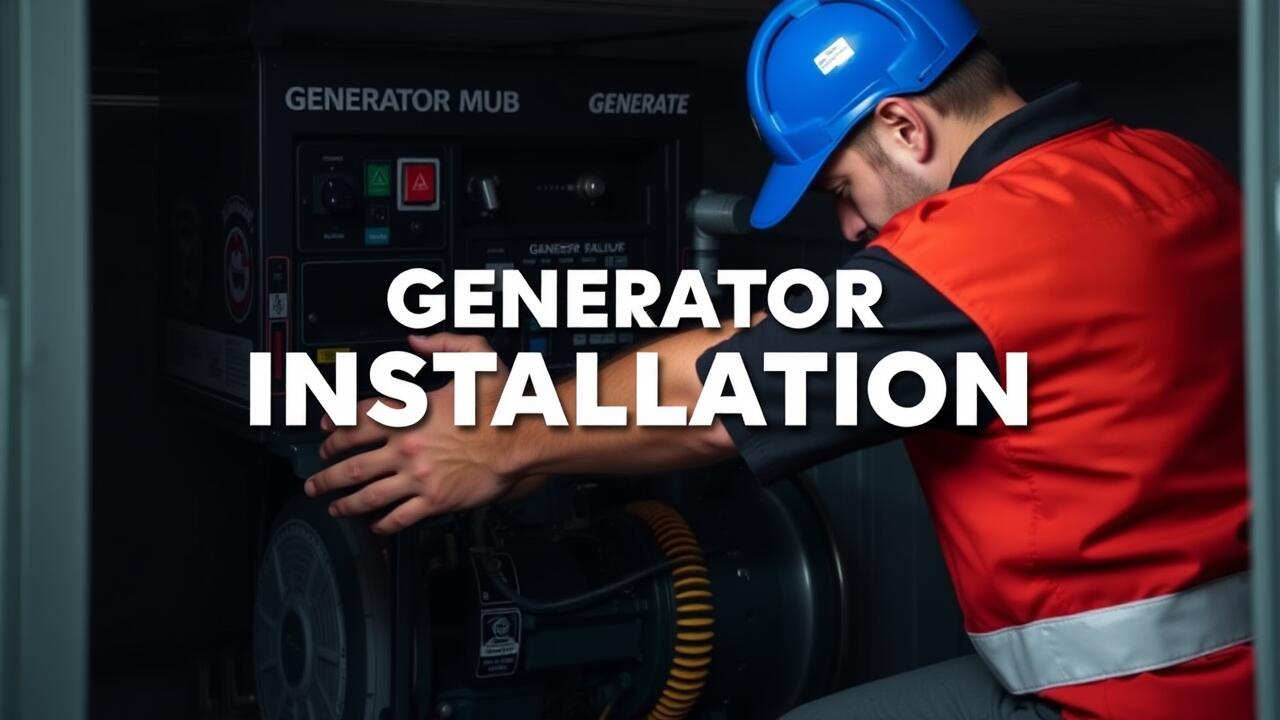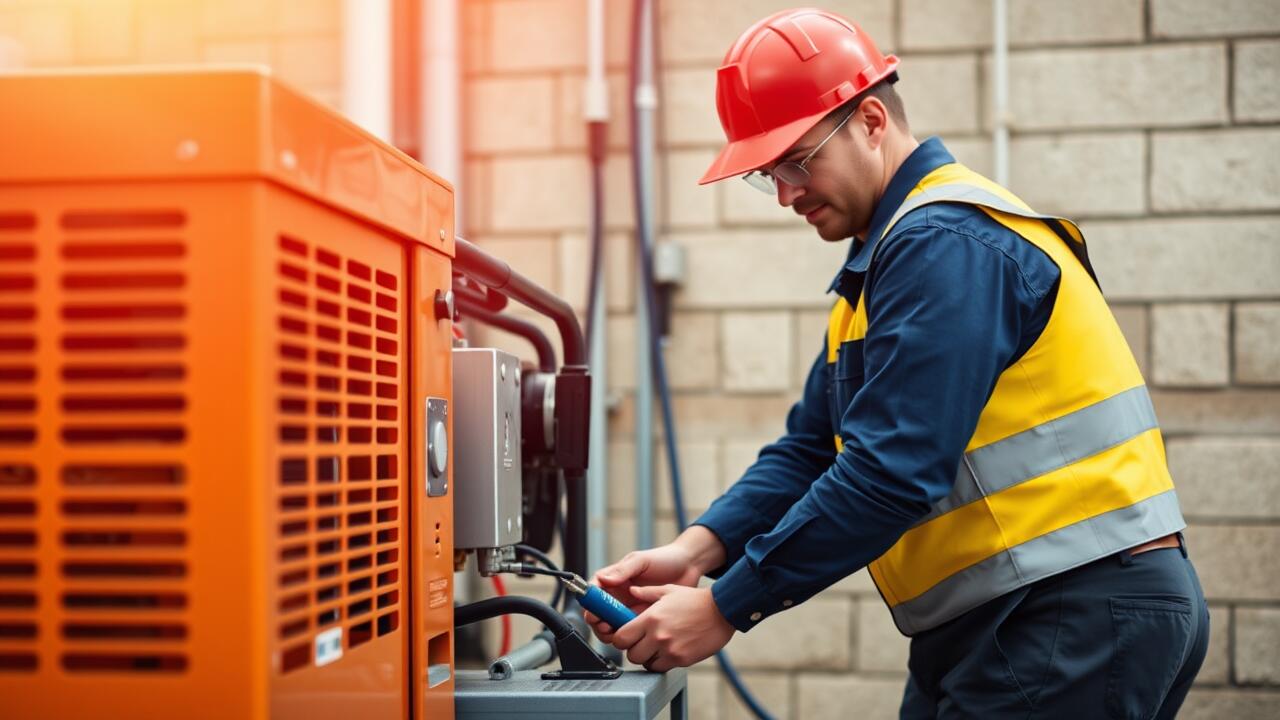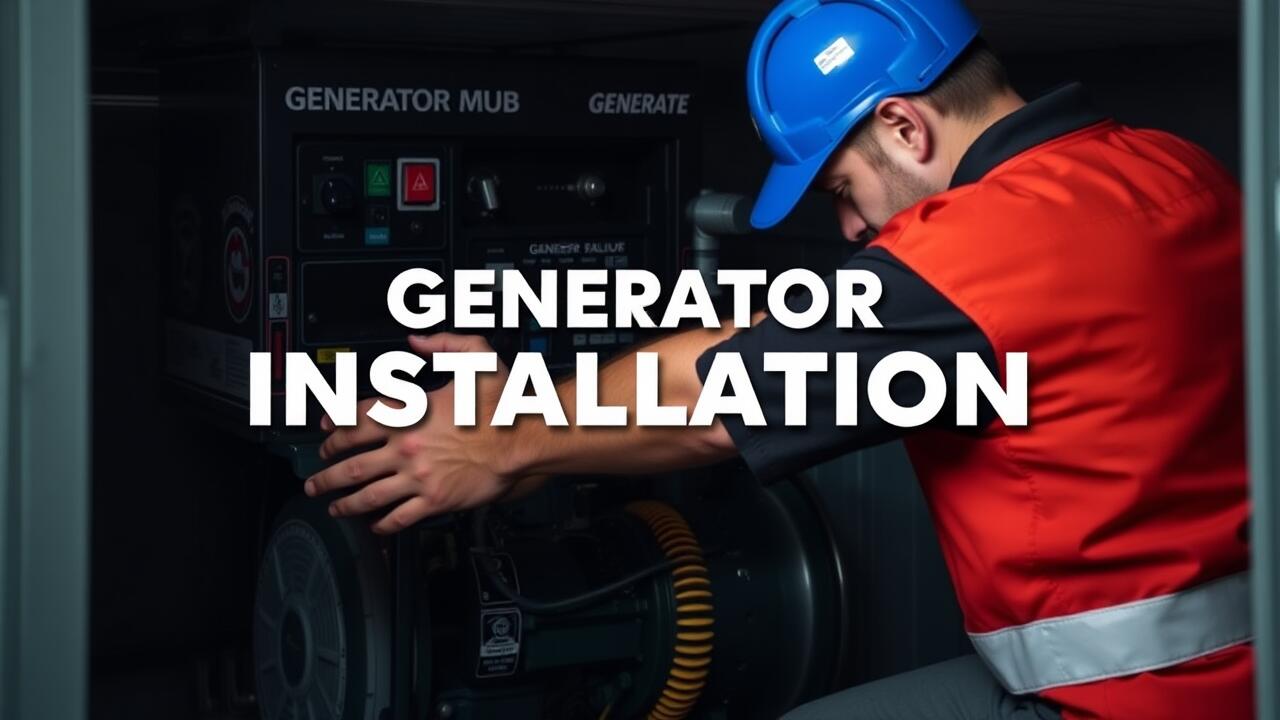
Generator Types and Placement Needs
When considering generator types, the two main categories are portable and standby generators, each with distinct placement needs. Portable generators are usually smaller and more versatile, allowing for flexible placement depending on power needs and access to fuel sources. They can be positioned closer to the home; however, proper ventilation is crucial to avoid exposure to harmful fumes. In contrast, standby generators are permanently installed outside and must be located within a specific distance from the house to ensure efficient operation and safety.
Generator Installation in Bellaire Junction, Houston may involve adhering to local codes that dictate distances for both types of generators. Standby units typically require a minimum distance from windows and doors, often around five feet, to keep exhaust safely away from living spaces. Additionally, the placement should consider factors such as accessibility for maintenance and proximity to utility connections, ensuring that both functionality and safety are prioritized in the installation process.
Differences Between Portable and Standby Generators
Portable generators offer flexibility and convenience. They can be easily transported to various locations, making them ideal for outdoor activities or temporary power needs during outages. However, these generators typically require manual setup and connection to the home’s electrical system, which may involve the use of extension cords.
Standby generators, on the other hand, are permanently installed and can automatically provide power to the home in the event of an outage. These systems connect directly to the electrical panel and begin operation without requiring user intervention. For anyone considering generator options, especially in areas like Bellaire Junction, Houston, understanding the distinct features and requirements of each type is crucial for effective and safe installation.
Environmental Impact on Placement
The placement of a whole house generator requires careful consideration of environmental factors that can influence both performance and safety. For example, proximity to trees, shrubs, or other potential hazards can increase the risk of damage from falling branches during storms. Additionally, generators should be placed in an area that allows for proper ventilation, reducing the risk of carbon monoxide buildup. Local zoning laws may also dictate acceptable distances from property lines and neighboring structures.
Soil conditions play a significant role in determining the ideal placement for a generator. Ground stability is essential to support the weight of the unit and ensure reliable operation. Areas with poor drainage may lead to water pooling around the generator, potentially causing electrical issues or rust over time. When considering Generator Installation in Bellaire Junction, Houston, evaluating the local landscape and drainage patterns will be vital in ensuring optimal performance and longevity of the system.
Evaluating Soil Conditions and Drainage
Proper evaluation of soil conditions is essential when determining the placement of a whole house generator. Soil type influences stability and drainage, two critical factors for maintaining the longevity of the generator and preventing operational issues. Soft or saturated soils may not support heavy equipment, which could lead to settling or shifting over time. Additionally, compacted soils generally offer a firmer foundation, reducing the risk of water accumulation that can impact the generator's performance.
Drainage is another key consideration in this evaluation. Poor drainage can result in water pooling around the generator, increasing the likelihood of corrosion or electrical failure. It is advisable to assess the slope of the land and existing drainage systems before proceeding with installation. For those considering Generator Installation in Bellaire Junction, Houston, taking time to evaluate these conditions ensures a secure and effective setup, ultimately enhancing the generator's functionality and safety.
Connecting to Your Home's Electrical System
Connecting a generator to a home’s electrical system requires careful consideration of both safety and compliance with local codes. Typically, a manual transfer switch is installed to ensure that electricity flows properly between the generator and the home’s circuit without back-feeding into the grid. This setup prevents potential hazards for utility workers and safeguards the home’s electrical system. Generator Installation in Bellaire Junction, Houston, highlights the importance of using a transfer switch to facilitate this connection safely.
The electrical connection should be handled by professionals who understand both the technical and regulatory aspects of generator installation. A certified electrician can assess the home's electrical layout and determine the best method for connecting the generator, ensuring it meets safety standards. Attempting a DIY installation can lead to significant risks, including equipment damage and fire hazards. Investing in professional installation not only enhances safety but also ensures compliance with relevant codes in the area.
Professional Installation vs. DIY Options
Choosing between professional installation and a DIY approach for a whole house generator can significantly impact its performance and safety. Professional installers have the expertise to assess local codes and regulations, which can vary by location. They ensure that the generator is correctly connected to your home's electrical system, minimizing the risk of electrical hazards. In areas like Bellaire Junction, Houston, understanding local requirements is essential for a successful installation.
On the other hand, some homeowners may opt for a DIY installation to save costs. While this can be feasible for experienced individuals, it requires a thorough understanding of electrical work and local laws. Improper installation may lead to serious issues, including generator failure or unsafe conditions. In Bellaire Junction, Houston, consulting with professionals may ultimately provide peace of mind and long-term reliability for your generator system.
FAQS
How far away from the house should a whole house generator be placed?
A whole house generator should typically be placed at least 5 to 10 feet away from the house, depending on local codes and safety regulations. It's important to check with local authorities or a professional installer to ensure compliance.
What factors influence the placement distance of a generator?
Factors that influence the placement distance include local building codes, the type of generator (portable vs. standby), ventilation needs, access for maintenance, and environmental conditions such as soil drainage.
Can I install a whole house generator myself?
While some homeowners may opt for DIY installation, it is generally recommended to hire a professional installer. This ensures compliance with local codes, correct integration with your home's electrical system, and proper placement for safety.
What are the differences between portable and standby generators in terms of placement?
Portable generators can be placed closer to the home, often around 5 feet away, but should be used outdoors and away from windows and doors due to exhaust fumes. Standby generators require more distance and specific placement considerations for permanent installation.
Are there any environmental considerations to keep in mind when placing a generator?
Yes, environmental considerations include evaluating soil conditions for stability, ensuring proper drainage to prevent flooding, and considering the impact on landscaping and nearby structures. Adequate clearance for airflow and noise reduction is also important.
